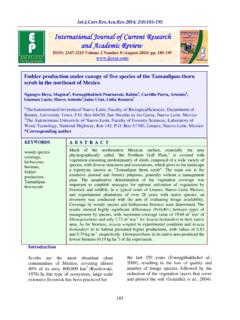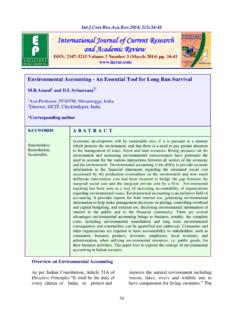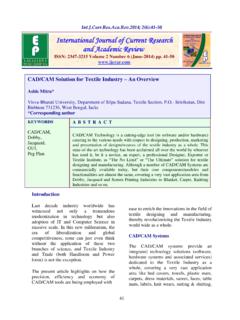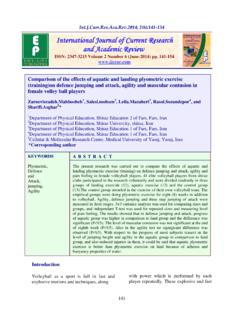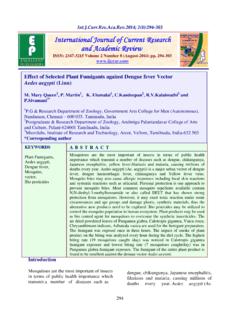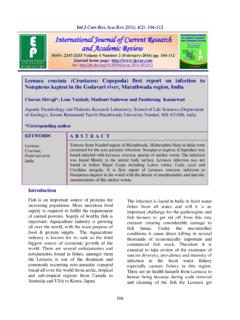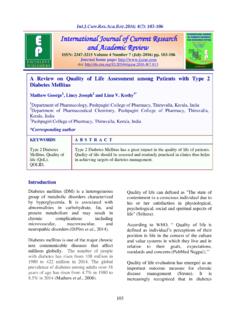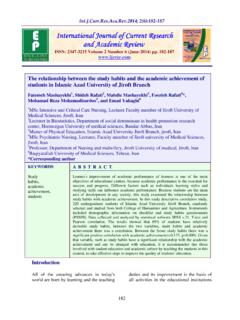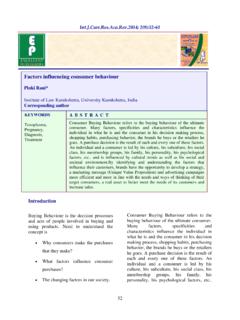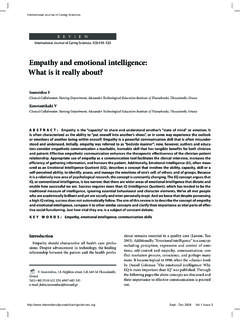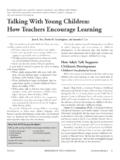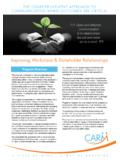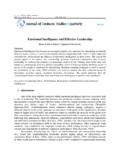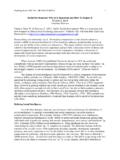Transcription of A study on emotional intelligence among faculty …
1 256 Introduction emotional intelligence (EQ) is the ability to identify, use, understand, and manage emotions in positive ways to relieve stress, communicate effectively, empathize with others, overcome challenges, and defuse conflict. emotional intelligence impacts many different aspects of our daily life, such as the way you behave and the way you interact with others. The teachers are responsible for imparting education and guidance to students and also for undertaking research development in their respective fields for enriching the quality of teaching and research. They need to have a free mind as well as knowledge so as to concentrate on the teacher-learner process.
2 With this connection, teachers behavior with EI in an organization is important because for getting success in their profession as well as in life. Therefore this skill is really required to make the teachers performance very effective. This skill can make the teachers not only able to deal with their students but with their colleagues as well. Therefore, a study on the emotional intelligence among faculty members in the selected engineering colleges in Kadapa region was conducted. A study on emotional intelligence among faculty members of selected engineering colleges in Kadapa region A.
3 Uma Devi1 and P. Chitti Babu2* 1 Assistant Professor, Department of MBA APGCCS, Rajampet, Andhra Pradesh, India 2 Principal, APGCCS, Rajampet, Andhra Pradesh, India *Corresponding author ISSN: 2347-3215 Volume 3 Number 8 (August-2015) pp. 256-261 ABS TRACT The present paper aims to investigate the level of emotional intelligence of faculty members in selected engineering colleges in kadapa district. A total of 240 faculty members with 3 types of designations, ranging in teaching experience from 1 to more than 20 years, were selected for the study . The data was obtained through a convenience sampling technique and analyzed using descriptive statistics.
4 The study identified that wellbeing and emotionality factors are highly influencing on faculty members emotional intelligence than compared to sociability & self control factors. It is concluded that the possession of high emotional intelligence is more important when managing stress and emotions at workplace. KEYWORDS emotional intelligence , Wellbeing, Emotionality, Sociability, Self-Control, faculty Members, Descriptive Statistics 257 Since 1990, Peter Salovey and John D. Mayer have been the leading researchers on emotional intelligence . In their influential article " emotional intelligence ," they defined emotional intelligence as, "the subset of social intelligence that involves the ability to monitor one's own and others' feelings and emotions, to discriminate among them and to use this information to guide one's thinking and actions" (1990).
5 Many studies were conducted on EI and found various facts. According to U W M R Sampath Kappagoda (2014), research the teachers who have high emotional intelligence show less work-to-family conflict and family-to-work conflict. It is concluded that the possession of high emotional intelligence is more important when balancing work-family responsibilities. However, Arvind Hans et al. (2013) conducted a study on emotional intelligence among teachers: A case study of private educational institutions in Muscat. The study found that the teachers of private educational institutions have high level of emotional intelligence . A similar study was conducted to identify the level of emotional intelligence among the teachers Zahar Abdolvahabi et al.
6 (2012) found the relationship between emotional intelligence and job self efficacy in research courses among 200 Tehran physical education teachers. Bar-On, emotional and Self efficacy job questionnaires were used to evaluate the teachers attitudes. The results demonstrated a significant relationship between emotional awareness, empathy and self efficacy. Kirshnamurthy and Varalakshmi (2011) conducted a study to know the emotional intelligence of employees working in educational institution. A sample size of 200 teaching and non teaching staff was taken for study on the basis of demographic factors. Questionnaires were designed in five segments consists of personal information, adaptability, assertiveness, emotional management, self esteem and relationship of respondents.
7 The result revealed that the improvement in emotional intelligence would increase the motivation and effectiveness of the employee. Edannur (2010) assessed the emotional intelligence level of teachers and educators of Barak Valley region in the Indian state of Assam (India). The result showed that the group under study possessed average emotional intelligence . The gender and locality of the teacher educators did not make any differential influence on their emotional intelligence . Moafian and Ghanizadeh (2009) studied the impact of teachers emotional intelligence on self efficacy. Regression analysis with multiple variables indicated that dimensions of emotional self awareness, interpersonal relation and problem solving were significant predictor of teachers self efficacy.
8 Kaufhold and Johnson (2005) indicated that teachers improving their emotional intelligence emphasized on the values of individual differences and promote the cooperative learning so as to solve problems and guide the students to promote social competence. Mahmoudi (2011) found the effect of emotional intelligence among 300 studying in five colleges of Yasouj district in Kohgiloyeh. A descriptive analysis, t-test and F test was used for the analysis and concluded that the emotional intelligence among the teacher trainees was normal. To investigate the level of emotional intelligence among faculty members of engineering colleges in Kadapa region.
9 To know how the faculty are striving to meet a standard of excellence with EI in the colleges. 258 Materials and Methods The present study is a descriptive study , to identify the level of EI among faculty members in Kadapa region. Structured questionnaires were distributed to 250 respondents using Convenience Sampling method among various engineering colleges faculty members in Kadapa region and 240 questionnaires were returned to us. The study is undertaken both by primary and secondary sources of data and information. The questionnaire related to various EI factors like Sociability, Emotionality, self-control, wellbeing.
10 Five point Likert scale was used to rate the responses of the respondents, in which 1 indicates strongly Disagree, 2 indicates Disagree, 3 indicates Neither Agree Nor Disagree, 4 indicates Agree, 5 indicates strongly agree. Descriptive statistics used to calculate factor scores and compared to Total EI score value. Results and Discussion Demographic profile of the Respondents The Gender ratio for the sample group was 66% male (n=158) and 34% female (n=82).The Age groups in the sample are 30% were <30 years (n = 72); 40% were 3140 years (n = 96); 25% were 41-50 years (n= 60); and 5% were 51 years and above (n = 12) Qualification of the employees are 40% were UG (n = 96); 50% were PG (n= 120); and 10% were PhD (n = 24) holders.
